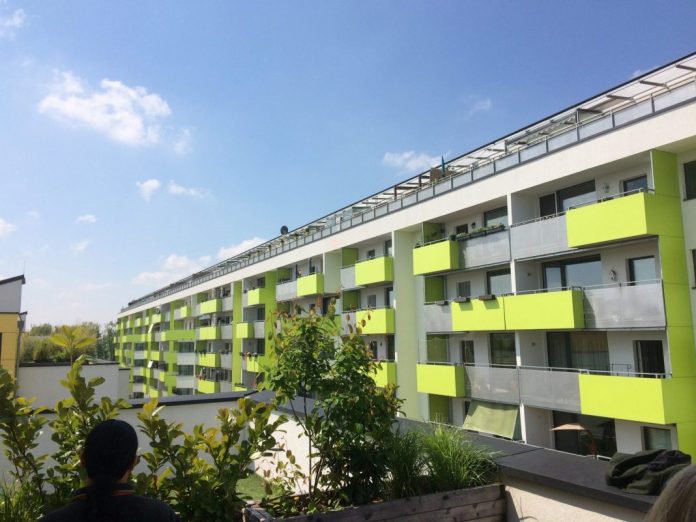The City of Seattle owns a deep portfolio of buildings, while also overseeing a steady progression of new construction—schools, libraries, fire stations, office buildings—it is a long list. Many of these buildings were constructed before modern energy codes. Some need seismic retrofits. The lighting and mechanical systems in these buildings are slowly being rehabilitated for better energy efficiency.
This is a positive, but the pace for these changes is slow. Furthermore, there are several new projects in planning or under construction, that are being built to today’s energy codes, which will be obsolete in the coming years. We sit in a new paradigm, at the crossroads of a warming planet, and a pandemic that looks to require “hygiene ventilation.” The Passivhaus standard directly addresses both of these topics. The city has an opportunity to lead on climate, and push for 21st century buildings that are resilient, efficient, and healthy. It is time for the city to require all public buildings, those taking city dollars, and those utilizing City-owned land, be built to meet or exceed the Passivhaus standard.
What is the Passivhaus standard? In brief, an energy standard resulting in buildings using half as much energy or less than those built under the present iteration of the energy code (which is most). It is a holistic system using, in the Pacific Northwest, optimized thermal insulation, elimination of thermal bridges, airtightness, triple-pane windows, and 100% fresh, filtered ventilation utilizing heat recovery. These are buildings that require little to no heating, and if needed, little to no cooling, either. Passivhaus schools even utilize the energy expended by students—kiddie watts!—to provide a large portion of heating needs. (That’s how efficient these schools and buildings are.) Passivhaus buildings may require cooling with the onset of global warming, however the same physics apply as with heating, and loads (and therefore systems) will be significantly smaller and less expensive than typical construction.
While Passivhaus is an energy standard, it has several other benefits for buildings, especially public ones. The optimized insulation, triple-pane windows, and elimination of thermal bridges—along with rigorous quality control to ensure airtightness is achieved—ensure that there are no drafts, mold, or condensation, and that buildings are quite comfortable and indoor environmental quality is incredibly high. Residents in social housing built with City funds or on City-owned land would be living in some of the most comfortable, healthiest buildings possible.
Passivhaus ventilation uses 100% fresh, filtered air. Those working or living in these buildings—students/workers/residents—are not breathing re-circulated air. This is especially important during this pandemic where fresh air has been shown to be beneficial in mitigating exposure indoors. What this also means is carbon dioxide levels within public buildings, such as schools, are lower than in traditional buildings. This is critical to student learning.
British architecture firm Architype did a recent study on CO2 levels in Passivhaus schools. This approach is also critical in a region where wildfires and car pollution are creating unhealthy air for a large part of the year (as you can see in this picture of an HRV filter in British Columbia). This legislation would result in new and rehabilitated public buildings that function as cooling centers and spaces of respite during periods where air is unhealthy, a sort of bioweapons defense mode for our most vulnerable residents.
There is precedent for legislation like this in cities taking a very proactive approach to leading on climate action. After the passage of the European Union’s Energy Performance of Buildings Directive in 2010, the city of Brussels underwent a massive transformation to rapidly bring its construction industry from one of the least energy efficient in the European Union to the most energy efficient. They utilized incentives and training programs to prepare developers for the mandate. By 2015, the city required that all new buildings and major rehabs meet Passivhaus standards.
This month, the city of Tuebingen, Germany authorized legislation that all public projects, and all buildings utilizing public land, would be required to meet the KfW-40 standard (the Kreditanstalt für Wiederaufbau is a state-owned financial institution specializing in loans for energy efficient construction and retrofits (KfW-40 is the consumption per square meter in this case functional equivalent to Passivhaus)).
Freiburg has required Passivhaus for public buildings for a several years, with a new Rathaus (city hall) being built to meet Passivhaus. Their new mayor is looking to follow Tuebingen’s lead and expanding where Passivhaus would be required. Aachen adopted the Passivhaus standard (Aachener Standard) for public buildings in 2010 when the United States only had a handful of Passivhaus consultants (I was in the second class of certified Passivhaus consultants). Heidelberg’s recent Bahnstadt district (video here) required all buildings to meet Passivhaus, and new districts currently in planning will also be required to meet or exceed Passivhaus standards.
Climate action around buildings is prevalent in the European Union where legislation is driving much of this. There are also significant efforts in market adaptation, and research and development, as I noted on Treehugger last year. There is not a single jurisdiction in the United States that requires anything close to Passivhaus for public or private buildings. Starting this year, all new buildings in the European Union must be nearly Zero Energy Buildings (nZEBs), nearly as efficient as a Passivhaus.
With the potential for hitting 1.5 degrees Celsius shifting to likely in just a few years, we are past criticality. Seattle’s energy code is only nominally better than the Washington State Energy Code, which isn’t slated to meet Passivhaus levels of performance until nearly 2030 through incremental increases in performance. This is a decade after the European Union and a decade’s worth of buildings lacking the performance, resilience, and durability needed in a warming climate. Yet we have the ability and technology today.
We need a Seattle City Council that will put forth the framework and legislation to mandate this. It means future-proofed buildings, resilient to energy spikes. It means reduced energy costs for owners, the taxpayers of the city. It means comfortable and healthy environments for workers, students, and residents. It means green jobs. It means healthy schools, and spaces to recoup in heat waves and wildfires.
Passing legislation to address this would be a gamechanger, providing the space for the market to react to the city’s leadership. Incentives for deep green buildings have been wholly insufficient, the 2009 Living Building Pilot program resulted in few Living Buildings, and the mayor’s “Climate Action Plan” is laughably inadequate. With the likelihood of a green recovery on the horizon, Seattle can no longer wait to be a climate leader. Now is the time to get in front of this issue–and lead.
Mike is the founder of Larch Lab, an architecture and urbanism think and do tank focusing on prefabricated, decarbonized, climate-adaptive, low-energy urban buildings; sustainable mobility; livable ecodistricts. He is also a dad, writer, and researcher with a passion for passivhaus buildings, baugruppen, social housing, livable cities, and car-free streets. After living in Freiburg, Mike spent 15 years raising his family - nearly car-free, in Fremont. After a brief sojourn to study mass timber buildings in Bayern, he has returned to jumpstart a baugruppe movement and help build a more sustainable, equitable, and livable Seattle. Ohne autos.



